DIPLOCYCLOS
Diplocyclos
(Endl.) Post and O. Kuntze, Lex. Gen. Phan. 178. 1903; Jeffrey, Kew Bull. 16(3): 339. 1962; Milne-Redhead & Polhill, Fl. Trop. E. Afr. (Cucurbitaceae) 71. 1967; Hutch., Gen. Fl. Pl. 2: 402. 1967; Fl. China @ eFloras.org vol. 19: 52; Nazim. & Naqvi, Fl. Pak. @ eFloras.org p. 20.
Perennial herbs, scandent or climber; tendrils 2-fid. Leaves simple, palmately 5-lobed. Flowers unisexual, actinomorphic, epigynous, small, white, cream or pale yellowish; male flowers in short fascicles; female solitary or both male and female clustered in same axil. MALE FLOWERS: Calyx tube broadly campanulate, lined within by a nectary, 5-lobed, lobes small. Corolla gamopetalous, campanulate, 5-lobed, lobes small, entire. Stamens 3, free, inserted on the calyx tube; filaments short; anthers ovoid, one 1-celled, others 2-celled, anther cells linear, slightly flexuous. Pistillode absent. FEMALE FLOWERS: Calyx and corolla as in male flowers. Staminodes 3. Ovary globose or ovoid, with 3 placentas, ovules few, horizontal; style slender; stigmas 3, each 2-lobed. Fruit baccate (berry), globose-ovoid or ovoid-rostrate, red, longitudinally lined or variegated. Seeds pyriform, with highly convex disc and 2-grooved margin.
5 species
Diplocyclos palmatus
Diplocyclos palmatus
(L.) C. Jeffrey, Kew Bull. 15(3): 352. 1962; Milne-Redhead & Polhill, Fl. Trop. E. Afr. (Cucurbitaceae) 73. 1967; Stewart in Nasir & Ali, Ann. Cat. Vasc. Pl. W. Pak. and Kashm. 704. 1972; Jeffrey, Kew Bull. 34: 801. 1980; Chakravarty, Fasc. Fl. Ind. 11: 48. 1982; Sharma & Kachroo, Fl. Jammu (Illustr.): t. 105. 1983; Dhaliwal & Sharma, Fl. Kullu Dist. 299. 1999; Kaur & Sharma, Fl. Chamba Dist. 337. 2006; Gaur, Fl. Distt. Garhwal 177. 1999; Fl. China @ eFloras.org vol. 19: 52; Nazim. & Naqvi, Fl. Pak, @eFloras.org p. 21. Bryonia palmata L., Sp. Pl. 2: 1012. 1753.
Annual climber. Stem slender, glabrous. Tendrils glabrous, 2-fid. Petiole 1.5-9.0 cm, slightly puberulent. Leaf blade broadly ovate, 3.5-14 cm x 4-14.5 cm, membranous, palmately 5-lobed; middle lobe large, oblong-lanceolate, apex acuminate to obtuse; lateral lobes short, triangular lanceolate or oblong-lanceolate, both surfaces subglabrous, sinus rounded. Male and female flowers usually fasciculate in same axil. Male flowers in sessile clusters of 2-8, along with 5 female flowers in same cluster. MALE FLOWERS: Pedicel slender, 5-15 mm. Calyx tube ca. 2 mm x 5-6 mm; lobes 5, 0.5-1.0 mm, subulate. Corolla green yellow, ca. 7 mm in diameter; segments 5, ca. 2 mm x 0.5-1 mm, ovate, pubescent. Stamens 3, free, inserted on calyx tube, one 1- celled, two 2- celled; anthers ovoid, ca. 2 mm long, anther cells reflexed; filaments 1-1.5 mm. Pistillodes absent. FEMALE FLOWERS: Calyx and corolla as in male flowers. Staminodes 3, short. Tricarpellary, syncarpous, ovary inferior, ovoid or globose-ovoid, smooth, terete, ovules few, horizontal; style slender; stigmas 3, bilobed. Disc annular, indistinct. Fruit berry, globose or globose-ovoid, 14-18 mm in diameter, smooth, yellow green to red, narrowly white striped, indehiscent. Seeds few, brown, ovate, ca. 5 mm x 3 mm.
Common Names: Lollipop Climber, Marble Vine, Native Bryony, Striped Cucumber; Shivalingi (Hindi)
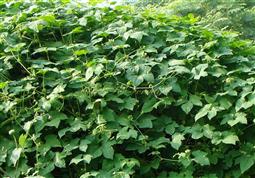
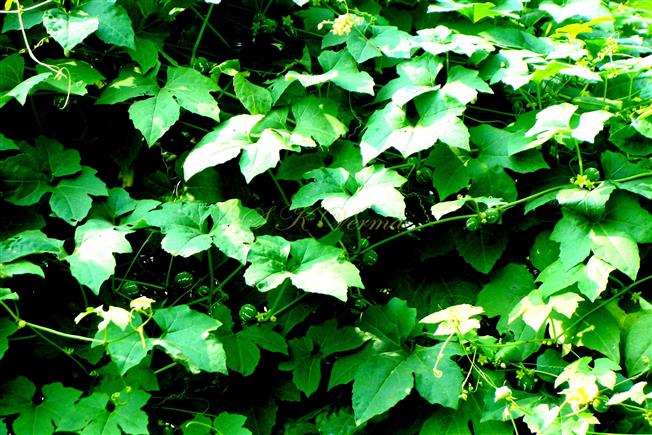
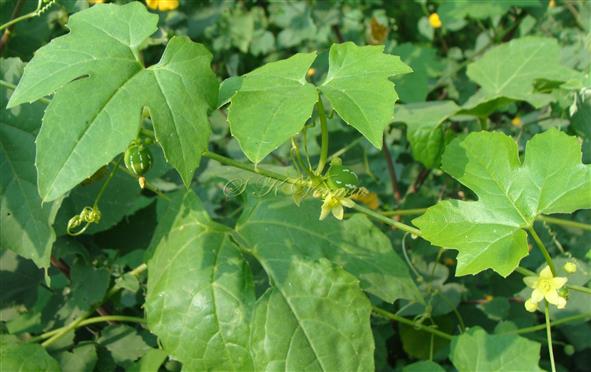
-0804.jpg)
-0808.jpg)
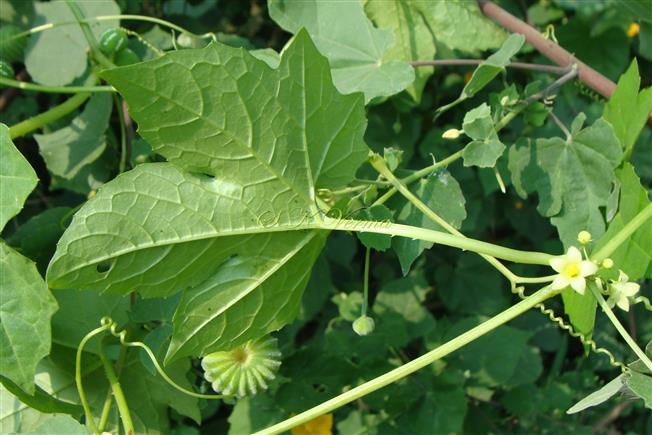
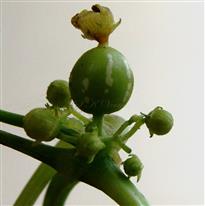
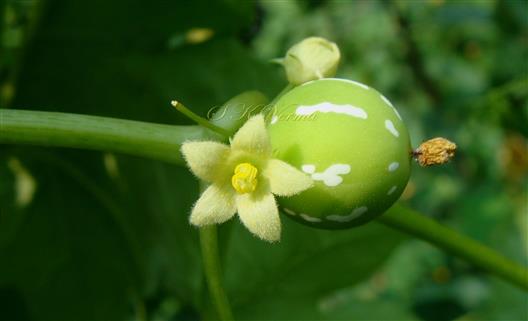
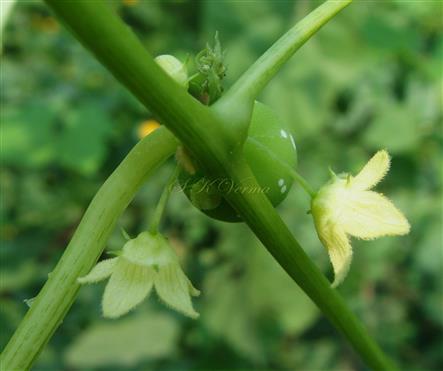
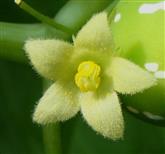
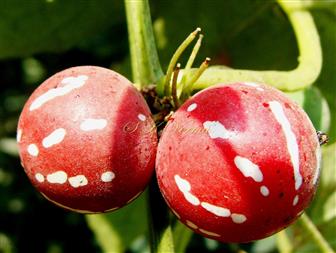
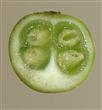
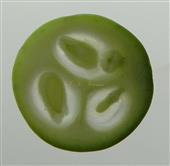




-0804.jpg)
-0808.jpg)







